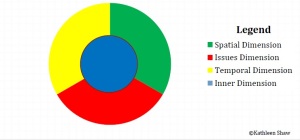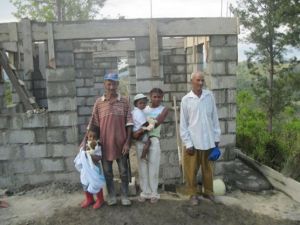This is my second school year working as an occasional teacher. Last year I was extremely fortunate to supply for my first two months with the board, then have an LTO for the remainder of the year.
This year, I’ve decided to stick to supplying. Every time I meet up with a teacher, or someone who knows I’m a teacher, I always get the question “What school are you at now?”. When I reply with “I’m just supplying”, the responses are also very similar “Oh, I am sure you’ll get a job soon”. The thing is… I don’t want a “job” (long term position) right now. Yet, why do I always feel a bit ashamed to admit this?
Those who follow me know I also work as an international volunteer trips facilitator.
 Last year, because I was in an LTO, I had to decline many trips that were offered to me, and with every decline I sent, a little piece of me was left too. I loved my LTO. I workedhard to make a difference during my LTO. I made many friends and many connections during my time there. I miss the school dearly. That being said, I still wasn’t ready to give up the facilitator part of my life.
Last year, because I was in an LTO, I had to decline many trips that were offered to me, and with every decline I sent, a little piece of me was left too. I loved my LTO. I workedhard to make a difference during my LTO. I made many friends and many connections during my time there. I miss the school dearly. That being said, I still wasn’t ready to give up the facilitator part of my life.
I believe being an international trips facilitator adds to my abilities and experiences as a teacher. Every trip I go on, I learn something new about social justice, student leadership and facilitating meaningful discussions. These are skills that I want to transfer into my teaching life, because I believe they make me a better teacher. These are skills and experiences that I feel will make me stand out.
I am excited to run student leadership programs in the future. I am excited to help my students become global citizens in the future. I am excited to run local and global initiatives within the school. I am excited to share my experiences. But I am not quite ready to do that yet.
Because I was supplying this year, I’ve already had the opportunity to travel to India. It was a challenging trip that really opened my eyes to debriefing and engaging students in different ways. I still have not applied to any LTOs, and I am still debating what to do in the new year. But is it really so bad if I just supply for the year, and get on track with LTO’s next semester? It’s an internal debate I keep having with myself. But what is wrong with “just supplying”?




 But the school also teaches proper farming and irrigation techniques which girls then pass on and teach their parents. The school also segregates time for students to learn about their traditional Kipsigi or Maasai culture from their mothers each week. Two “subjects” which are not traditional in our Ontario Education system
But the school also teaches proper farming and irrigation techniques which girls then pass on and teach their parents. The school also segregates time for students to learn about their traditional Kipsigi or Maasai culture from their mothers each week. Two “subjects” which are not traditional in our Ontario Education system I bring a personal experience here to reflect the changes of a school in a local Kenya community. The community of Irkaat is a community I visited which is partnered with a charitable organization called
I bring a personal experience here to reflect the changes of a school in a local Kenya community. The community of Irkaat is a community I visited which is partnered with a charitable organization called  primary school. School was not a priority for most families. Nor, were the community built, clay classrooms, appealing to those who wanted to go to school. As the community began to learn the importance of education and was educated about alternative income options their education system began to grow. In January of 2015 the school opened their FIRST grade 8 classroom, and for the first time in history they would have grade eight students write the national exam that is mandatory for high school placements.
primary school. School was not a priority for most families. Nor, were the community built, clay classrooms, appealing to those who wanted to go to school. As the community began to learn the importance of education and was educated about alternative income options their education system began to grow. In January of 2015 the school opened their FIRST grade 8 classroom, and for the first time in history they would have grade eight students write the national exam that is mandatory for high school placements.











